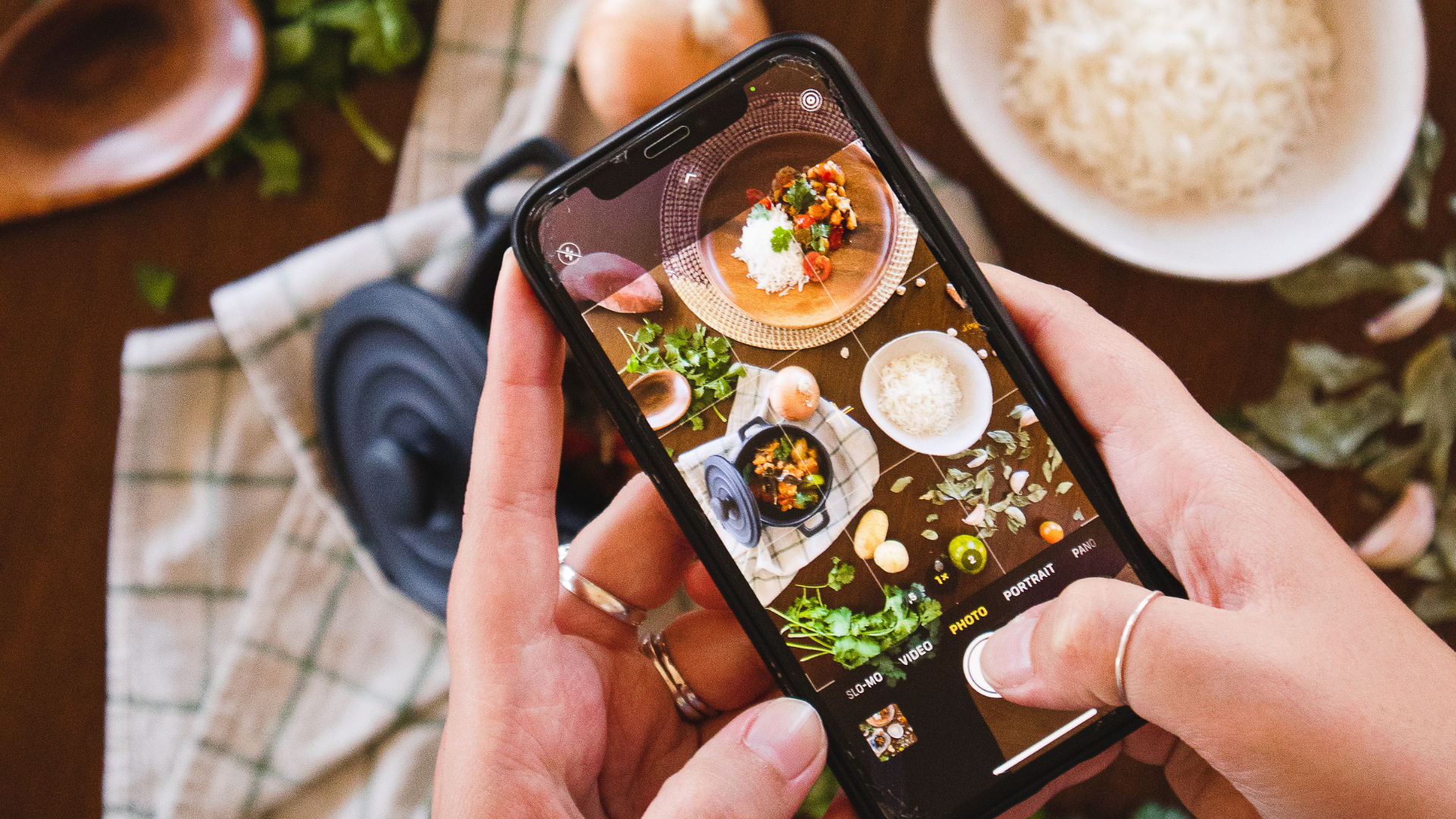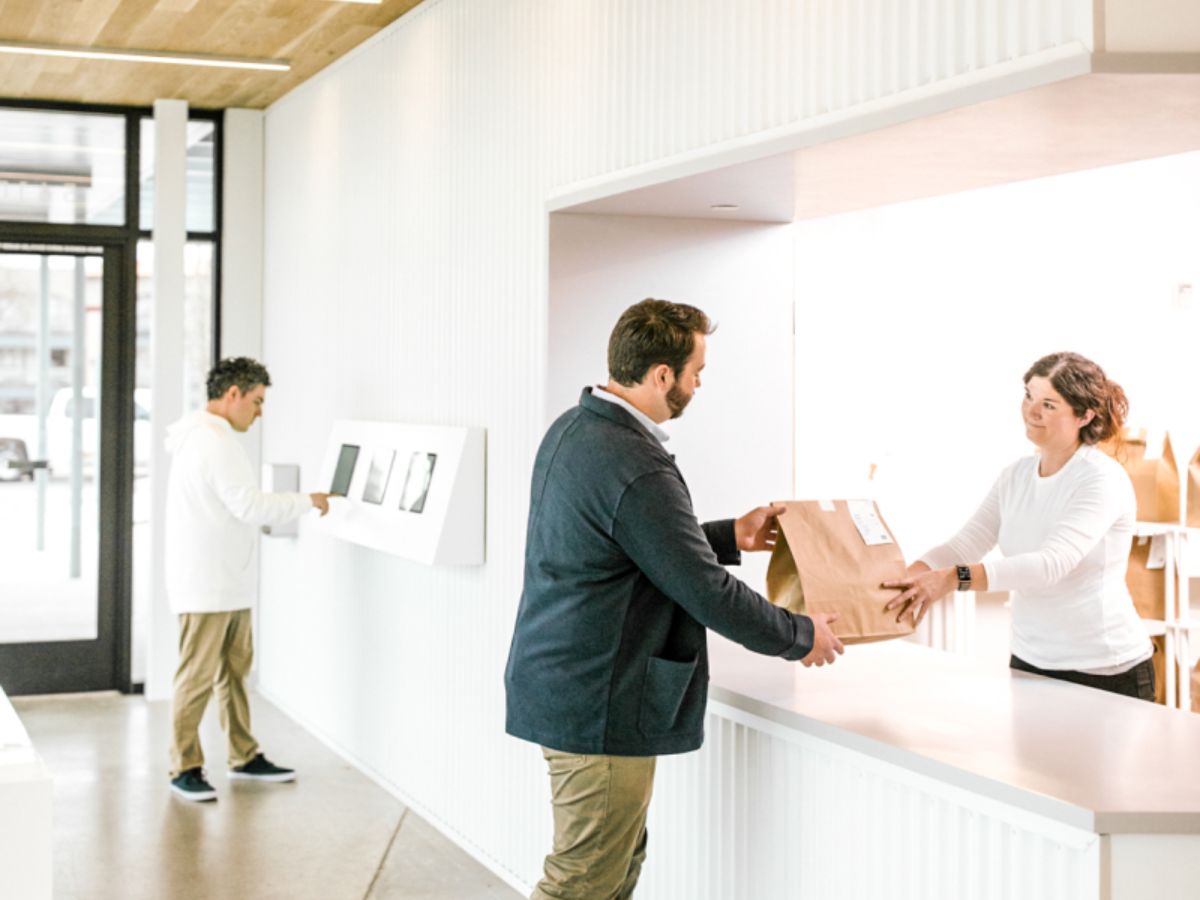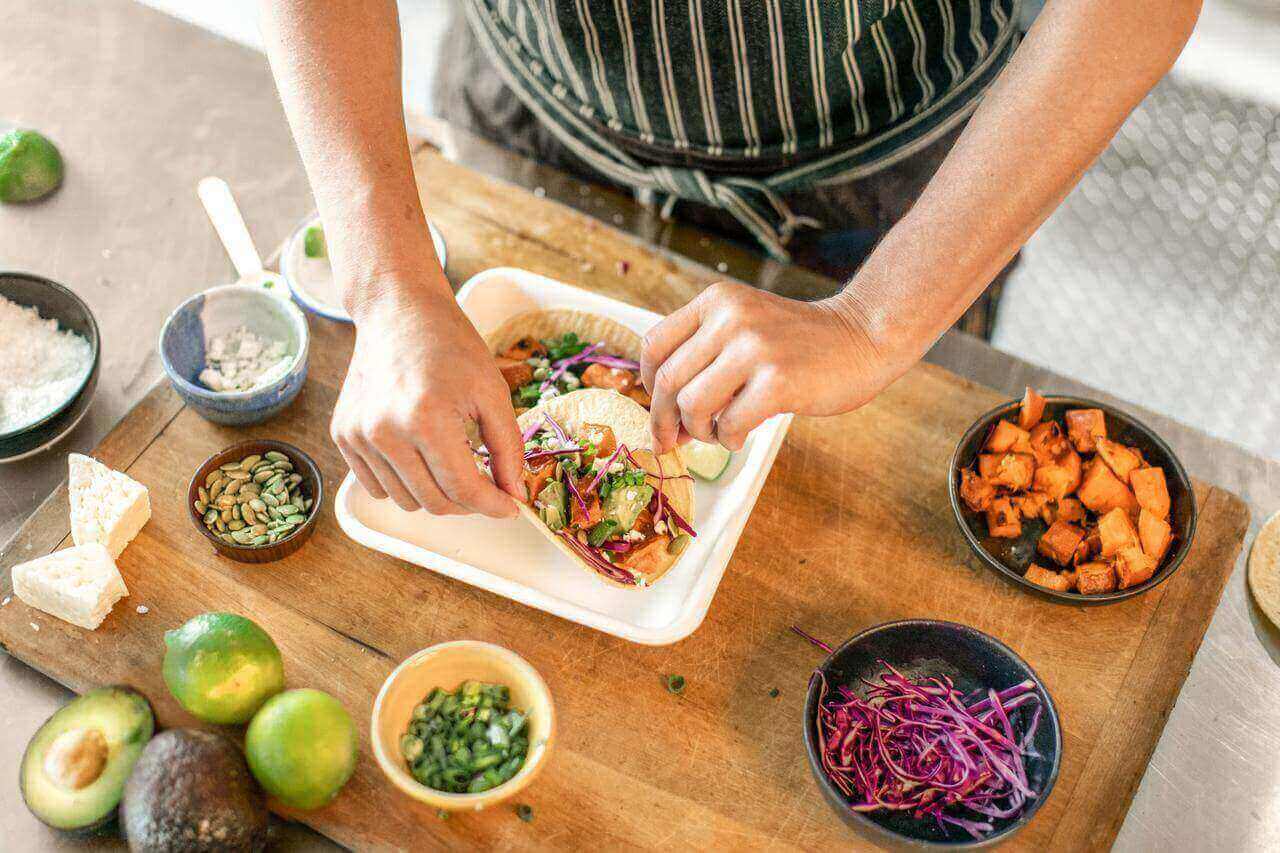Here’s How to Master Your Restaurant Marketing Strategy
Table of Contents

Master Your Restaurant Marketing Strategy Today!
As the food delivery industry continues to rise, more customers are shifting to online delivery apps for their next meal. In fact, it’s estimated that the online delivery industry will reach $365 billion by 2030.1
When you’re looking to open a restaurant, you’ll first need to establish your marketing strategy to build a brand that will thrive with online delivery.
However, with millions of hungry customers browsing for food online, how can you stand out from the rest?
We’re diving into the best tips and tricks you need to grow your online presence and keep those orders rolling in. You’ll be able to master marketing a restaurant online, so you’re building your restaurant business for the future.
1. High-quality food photos

First, you’ll want to start with high-quality images of your food for your online menu. This is your customer’s first impression of your business online, and lower-quality images can negatively affect your brand.
Did you know that including more great photos of your food online can help increase your restaurant sales by up to 6.5%?2
Whether you’re marketing your restaurant business on your website, delivery apps, or another third-party listing, you’ll want to maintain high-resolution photos throughout. You want your best dishes to shine and that means investing in the right content that will help you stand out from the competition.
You can even capture some great shots of your food using your phone. Try different angles, play around with different plating and you’ll have some unique photos of your food that stand out from the crowd.
Let’s say you have a killer grilled cheese sandwich on your menu. Take a video of a cheese pull with one of your sandwiches and more people will be eager to place an order.
Once you’ve gathered some great imagery of your food, you can look at additional ways to incentivize customers to order from you and encourage those five-star reviews.
2. Optimize Yelp Listing
Part of marketing a restaurant business online comes with generating more online reviews. With an optimized Yelp listing, you’ll be able to reach more customers online and encourage more rave reviews.
The most important aspects of your online listing are continuing to update your content and responding to online reviews. This will help you rank higher and showcase your great customer service.
Consumers value meaningful responses to their reviews, showing that you care about their business and hope to see them again soon.
Remember those high-quality photos we mentioned earlier? You’ll want to ensure those are on Yelp too. You want to streamline your online presence across multiple online channels. Meaning that no matter where someone finds your restaurant online, your listing is always on-brand.
3. Build Your Google My Business Profile (GBP)

Similar to Yelp, you’ll want to ensure your content is always up-to-date on your Google listing. This includes your hours of operation, address, contact information, and links to where consumers can order from your menu online.
Anytime a hungry customer is searching for restaurant delivery services in their area, you’ll want to make sure you’re reaching them with your Google My Business listing. Read more about Google Business Profile here.
You’ll also want to include multiple links depending on the specific action you would like each person to take. You can include a link to your website, the direct link to your menu as well as links to order pickup or delivery. This gives your customers easy access to order from your online menu, whether they found you on Google or Yelp.
Photos are again a crucial part of your listing. You’ll want to showcase your brand, menu items, and experience you have to offer your customers.
Recent studies also suggest that Google specifically favors businesses that regularly update their photos.3
This means updating photos not only helps your customers but also helps with your online ranking. It’s a win-win.
Google also favors restaurants that respond to online reviews regularly with lower response times. In order to keep your listing optimized, you’ll want to continue to respond to online reviews and maintain a high level of customer satisfaction. You can even select a member of your team to help with checking reviews on a daily basis, that way you never miss a beat.
Google and Yelp aren’t the only platforms where you can boost your online visibility. Next, we’re diving into food delivery apps, and how you can leverage each to build your online presence.
4. Partner with food delivery apps

As a best practice, you’ll want to partner with delivery apps that are the most popular, so you’re reaching a higher volume of consumers online. This includes everything from GrubHub for restaurants, DoorDash, Uber Eats, and Postmates.
Each has a variety of promotions available, depending on your marketing objective. Whether you want to focus on driving more orders or growing your customer base, you’re able to set your promotions based on what matters most to you and your business.
You’re able to offer free delivery on certain orders, or you can incentivize customers to spend more on their next delivery order with a special discount for a certain amount of orders.
Each promotion provides you with special tagging so you’re standing out on each delivery app online.
As you partner with more delivery apps and launch new promotions within each, you’re able to quickly boost your online visibility and capture more online orders.
Similar to Yelp and Google My Business, you’ll want to ensure that reviews are responded to in a timely manner. The faster your response rate, the happier your customers will be.
5. Make your menu easy to navigate
In addition to great photos, availability on multiple delivery apps, and raving reviews, you’ll want to create a sleek online menu that’s easy to navigate. Your menu should be customizable within each food delivery app so that your customers can have the flexibility to create the order they want. This means anytime someone wants to add on an extra sauce or side dish, they can easily do so.
Customizations are a key contributor to the success of online menus. In fact, according to DoorDash, up to 95% of users customize their orders.4
https://blog.doordash.com/the-dish-our-end-of-year-trend-report-1dd66cee7deb
Chances are, if your menu isn’t customizable, your business may go to a competitor who has this option available. This is why offering customizations is so vital to the success of your online restaurant business.
When it comes to your online menu item descriptions, your front-of-house team isn’t there to describe each item at length, so the more detailed you can be in your item descriptions, the better.
When you’re building your online menu, put yourself in your customer’s shoes. Is it easy to navigate? Are there any key details missing?
You’ll also want to ensure your online menu reflects your unique restaurant brand identity.
Once you’ve created an appealing, functional menu, you can start gaining new customers online and even implement strategies to retain customers. We’re diving into how you can do this next.
6. Loyalty programs
Getting new customers to order from your online menu is great, but what about repeat customers?
That’s where loyalty programs come in. They’ll incentivize people to keep coming back, with the opportunity to receive a special discount, prize, or free meal after several orders have been made.
In fact, about 45% of consumers are more encouraged to order online if a restaurant has a loyalty program or mobile ordering available.1
https://upserve.com/restaurant-insider/online-ordering-statistics/
There’s a variety of loyalty programs you can choose from, depending on the specific offer you’d like to include. Most delivery apps such as Uber Eats offer loyalty programs for restaurant owners to implement. There are also apps available that are specifically for launching an integrated loyalty program for your restaurant. To name a few that you can leverage, there’s LevelUp, Belly, Loyal Blocks, and Perka.
Each is set up to help you easily implement an integrated loyalty program for your restaurant business online. This means you can create a seamless online ordering experience for your customers where they can earn and track their rewards.
Now that we’ve covered third-party listings, delivery apps, and loyalty programs, it’s time to dive into the ins and outs of social media marketing for your restaurant business plan.
7. Facebook and Instagram ads
Additional platforms that will help you better market your restaurant online are Facebook and Instagram. With paid Facebook ads, you can be very selective with your target audience, so you’re able to drive more traffic to your website and online menu.
When you’re first beginning to set up your Facebook ads, you’ll want to start with targeting your audience’s location and demographics. This will help you segment by your delivery radius and location so you’re reaching the right customers.
You can also target your customers based on their likes and interests, so you’re reaching the right audience with your ad. Let’s say you’re a barbecue joint. You can filter your audience by people who like barbecue on Facebook, and also those that are interested in ordering food online.
Once you’ve set your target audience, it’s time to determine the content you want to include in your ad. Read more about Social Media Marketing for Restaurants here.
This is a perfect time to use some of the great food photography you’ve had on deck. It’s best to focus on simplified content highlighting one popular menu item, and a simple call to action for your audience. Make it clear what action you want your audience to take once they see your ad.
You’ll want to direct them to your website or an online delivery app where they can order. This will help drive more traffic to your online menu and generate more online orders.
8. Organic social media
We’ve covered paid social advertising, but what about organic (unpaid) social media and community marketing? There’s so much you can do to drive brand awareness about your restaurant, without having to spend a dime.
With organic social media, you’ll want to consistently post great food photography and highlight any special deals, giveaways, or promotions you’re running.
Just like with Yelp and Google My Business, consistency is key here. In order to stay top of mind with your customers, you’ll want to post organic content on a regular basis.
Not only can you post your own content, but you can also leverage user-generated content (UGC). This means any time you have a customer post a great photo of your food and tag you on social media, you can repost their content on your own feed.
This helps you easily gather more content to use on your own Facebook and Instagram feeds, but it also helps with social proof. You’re able to showcase how much your customers love your food and in turn, reach more people browsing online that you may not have otherwise.
When marketing a restaurant, this form of content also helps you build trust with your restaurant brand. When people see great photos of your food online and their friends post about your amazing food, they’ll want to order from you, too.
You’ll also want to post Instagram and Facebook stories. Everyone loves to see dishes being created behind the scenes. This is a great opportunity to grab your phone and upload a quick Instagram story showing one of your top dishes in the making.
To help you get started, we’ve created a social strategy template that you can use to help grow your online presence.
9. Instagrammable packaging

Once you’ve set a strong social media strategy in place, you can take it one step further with Instagrammable packaging. This will encourage your customers to create even more user-generated content (UGC) that will help build your presence on social media.
Instagrammable packaging also helps create a more memorable experience for your customers. You can find new ways to bring more of the dine-in experience to those eating your food at home. This also gives you a chance to continue to differentiate your brand once an order has been made. The more memorable their delivery experience is, the more likely you’ll be left with a five-star review online.
You’ll want to focus on menu items that package well and travel well. How you package your delivery items will also contribute to how the order tastes and looks once it arrives at its destination.
This means keeping packaging on-brand and potentially even including something special for your customer.
Let’s say you have a sushi restaurant. Instead of plain plastic containers for each order item, why not a beautiful box that is on-brand with each sushi roll uniquely displayed? You can also include your Instagram handle and hashtags on the box to encourage customers to share their experiences online.
This is how you can go from fulfilling a regular sushi delivery order to something that’s Instagrammable and memorable for your customers.
In addition to unique packaging that will help set your brand apart from the rest, you’ll also want to share press and media coverage to further differentiate your brand online. We’re diving into this next.
10. Build Positive Press
Whether it’s a rave review or recent press coverage of your restaurant, sharing this widely across multiple channels helps strengthen your brand online and can lead to more hungry customers interested in your food.
Whenever you receive notable recognition, it’s crucial that you share the news widely online across multiple channels to get more visibility.
This means sharing on social media, your website, advertisements, etc. You can even upload press coverage onto your Instagram account and save each as a highlight. That way, you can save any previous press coverage you’ve posted so it’s all in one place.
Once you generate some buzzworthy media and press coverage online, you’re one step closer to mastering your restaurant marketing strategy.
Start crushing the delivery game
Now you’re on track to building a successful restaurant business online. But we know this is a lot to take in. When you partner with CloudKitchens, you’re working with a team of industry experts, so you’re never in this alone.
We advise you on which ghost kitchen business model is suitable for you and the best business strategies that fit your restaurant and your needs, so you’re up and running without a hitch. We’ll provide key recommendations backed by data and be your dedicated guide to online delivery.
Plus, you’re able to get into one of our ghost kitchens or virtual kitchens in a month or less. You’ll be on the fast track to rapid growth, and we’ll support you every step of the way.
Ready to see a ghost kitchen in action? Schedule a tour of a CloudKitchens facility today!
Searching for a ghost kitchen in NYC, Orlando, Phoenix, and more? Call us today to find the nearest location near you!
Explore ghost kitchen locations across the US:
- Ghost kitchens in San Francisco
- Ghost kitchens in LA
- Ghost kitchens in NYC
- Ghost Kitchens in Toronto
- Ghost Kitchens in Atlanta
- Ghost Kitchens in Dallas
- Ghost Kitchens in Chicago
- Ghost Kitchens in Denver
- Ghost Kitchens in Miami
| DISCLAIMER: This information is provided for general informational purposes only and the content does not constitute an endorsement. CloudKitchens does not warrant the accuracy or completeness of any information, text, images/graphics, links, or other content contained within the blog content. We recommend that you consult with financial, legal, and business professionals for advice specific to your situation. |
Sources:
https://upserve.com/restaurant-insider/online-ordering-statistics/
https://foodscene.deliveroo.co.uk/restaurant-profiles/menu-photography-how-does-it-impact-sales.html
https://searchengineland.com/new-research-shows-strong-link-between-google-my-business-photo-quantity-and-search-performance-320199
https://blog.doordash.com/the-dish-our-end-of-year-trend-report-1dd66cee7deb
More insights & stories


